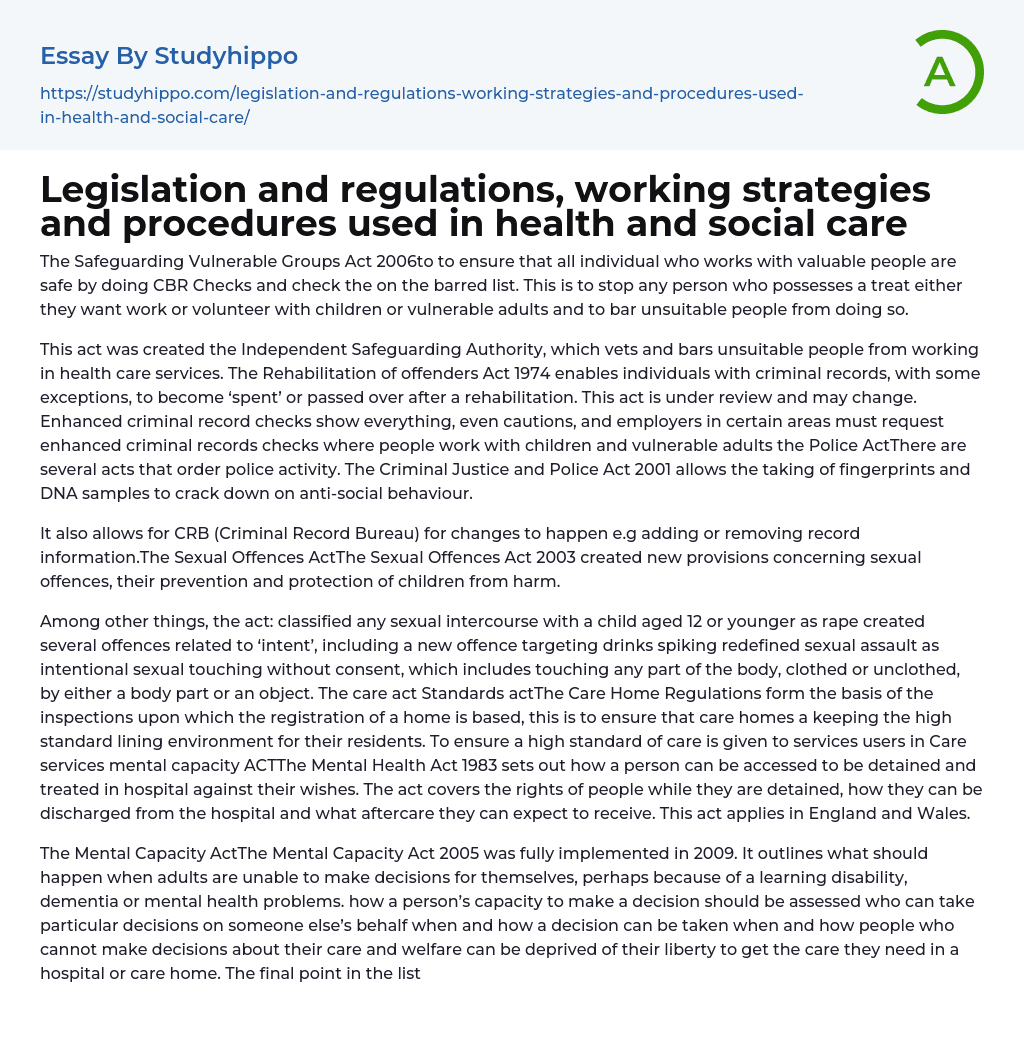

Protecting Vulnerable Groups with the Safeguarding Act 2006
The Safeguarding Vulnerable Groups Act 2006 was created to ensure the safety of individuals who work with vulnerable people. It does this by implementing CBR Checks and checking the barred list to prevent any person who poses a threat from working or volunteering with children or vulnerable adults. The act was established by the Independent Safeguarding Authority, which screens and prohibits unsuitable individuals from working in healthcare services. The Rehabilitation of Offenders Act 1974 allows individuals with criminal records, with certain exceptions, to have their offenses considered "spent" or forgiven after undergoing rehabilitation.
This text discusses the review and potential changes to an act. The act, known as the Police Act, requires enhanced criminal record checks that include cautions. In specific situations, employers are obligated to request these enhanced checks for individuals working with children
...and vulnerable adults. The Police Act is one of several acts governing police activity. Another relevant act is the Criminal Justice and Police Act 2001, which allows for the collection of fingerprints and DNA samples in order to address anti-social behavior. Additionally, this act enables modifications within the Criminal Record Bureau (CRB), including adding or removing record information. The Sexual Offences Act of 2003 introduced new measures related to sexual offenses such as classifying any sexual intercourse with a child aged 12 or younger as rape. This act also includes provisions targeting 'intent' offenses (including drinks spiking) and redefines sexual assault as intentional non-consensual touching – encompassing any part of the body, clothed or unclothed – using a body part or object. Lastly, the Care Home Regulations under the Care Act establish inspection standards for care homes to ensure they provide
high-quality living environments for residents.
The Mental Health Act 1983 sets out the processes for involuntary hospitalization and treatment of individuals, with a main emphasis on delivering high-quality mental health services. This legislation also details the rights of detained individuals, procedures for discharge, and support after detention. Its jurisdiction is limited to England and Wales. In contrast, the fully implemented Mental Capacity Act 2005, which came into effect in 2009, focuses on decision-making for adults who are unable to make choices due to learning disabilities, dementia, or mental health problems.
In April 2009, legislation was implemented to tackle multiple issues related to decision-making abilities, designating decision-makers, setting procedures for decision-making, and addressing cases where individuals unable to make decisions may be deprived of essential care. The Data Protection Act of 1998 specifically highlights the importance of safeguarding personal information in healthcare and social care settings. Unapproved divulgence or misappropriation of personal data, including addresses and medical records, can result in potential abuses and security threats like unauthorized entry into vacant residences. Furthermore, the act forbids the destruction of medical records.
To guarantee legal accessibility, the records of a deceased service user are securely kept in locked areas or password-protected computers. The Disability Discrimination Act of 1995 (modified in 2005) safeguards individuals with disabilities and forbids discrimination against them. Similarly, the Race Relations Act of 1976 (modified in 2000) declares it unlawful to discriminate against someone on the basis of their race.
The Human Rights Act 1998 protects different aspects, including race, colour, nationality (including citizenship), and national or ethnic origin. This protection is in line with the rights provided by the European Convention on Human Rights.
- Anatomy and Physiology essays
- Addiction essays
- Biodegradation essays
- Dental Care essays
- Disease essays
- Disorders essays
- Health Care essays
- Intelligence Quotient essays
- Nutrition essays
- Olfaction essays
- Public Health essays
- Women's Health essays
- World health organization essays
- Cancer essays
- Infectious Disease essays
- Lung Cancer essays
- Neurology essays
- Physical Exercise essays
- Medicine essays
- Sex essays
- Inquiry essays
- Disability essays
- Poison essays
- Action Potential essays
- Nervous System essays
- Childbirth essays
- Puberty essays
- Blood essays
- Kidney essays
- Neuron essays
- Body essays
- Glucose essays
- Sense essays
- Heart essays
- Skeleton essays
- Human Physiology essays
- Eye essays
- Immune System essays
- Muscle essays
- Skin essays
- Brain essays
- Central Nervous System essays
- Human Skin Color essays
- Digestive System essays
- Common sense essays
- Respiration essays
- alcoholism essays
- Smoking essays
- Casino essays
- Tobacco essays



